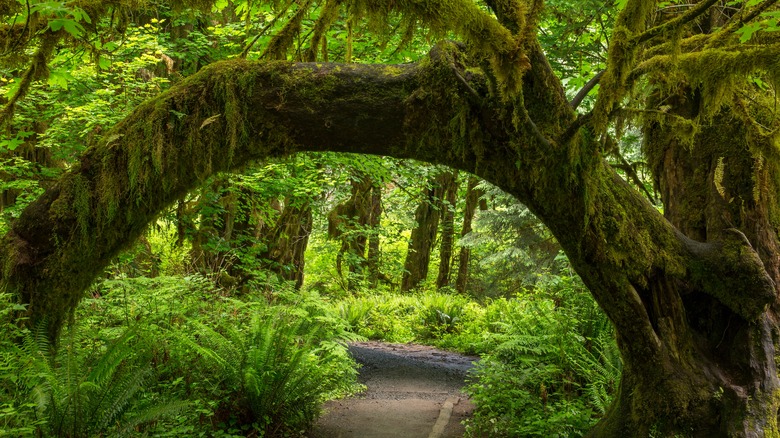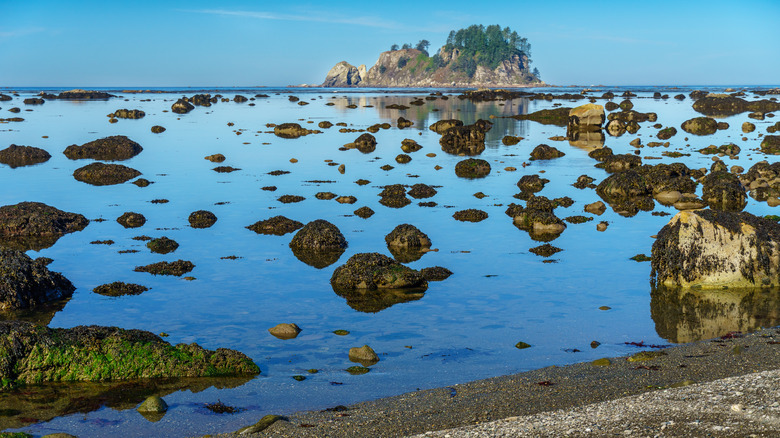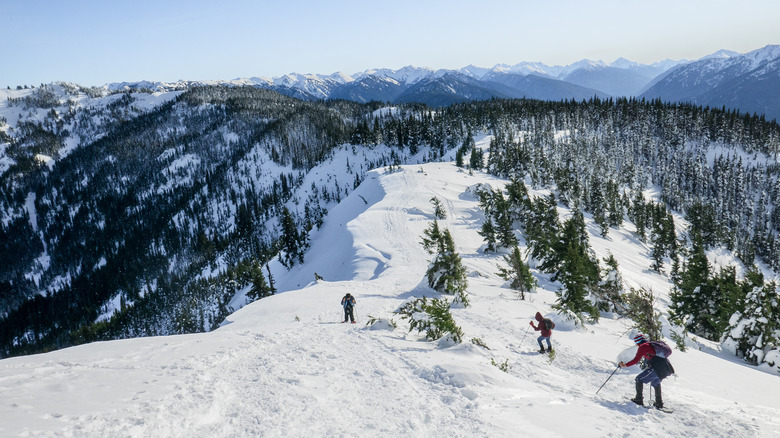How To Avoid A Crowded Olympic National Park
Olympic National Park is one of three national parks in the beautiful state of Washington, alongside Mount Rainier and North Cascades. Like much of the Pacific Northwest, it gets quite a bit of rain. But interestingly, the precipitation wildly varies depending on where you're at in Olympic National Park — and when you're there.
According to My Olympic Park, Port Angeles — the location of a visitor center and gateway to Olympic National Park — gets 26 inches of annual rainfall. Meanwhile, the Olympic Coast gets about 103 inches and the Hoh Rainforest gets a whopping 135 inches a year. This includes snowfall as well.
All that's to say the best time to visit, depending on your style, is probably when it's driest, which is during the summer. Of course, there will be trade-offs. July and August are typically the driest but to avoid the crowds, you'll need to venture deeper into the park or consider the shoulder season.
Lesser-visited areas
Avoiding big crowds at Olympic National Park in the summertime is relatively doable if you're willing to hike and explore lesser-visited areas. The 1,442-square-mile park has three major destination types — beaches of the Pacific Coast, its temperate rain forests (Hoh, Queets, and Quinault), and the mountain and old-growth forest areas.
If you're looking to really get away, head to Ozette, one of the most remote coastal areas of the park. It has beach access via hiking trails and it's the home of Ozette Lake, a large and quiet getaway. Of the rainforests, Hoh is by far the busiest. Meanwhile, Queets is the most remote. Access to the Queets River Trail, in fact, requires crossing a river ford and is often waist-deep in summer, according to the National Park Service. Quinault is far quieter than Hoh Rain Forest as well and features the spectacular Lake Quinault.
The old-growth forests of Olympic National Park are other relatively uncrowded places, even in summer. You'll want to check out Lake Crescent, the Sol Duc Valley, and the Staircase area, which is home to a forest of Douglas fir trees that dot the eastern portion of the park.
Winter in the park
Though it's not uncommon to run into road and trail closures, visiting in wintertime is a whole different experience and you're positively sure to avoid the crowds. According to the National Park Service, most of the areas of the park remain accessible, though there are few ranger-led programs and many facilities are closed during this time of year.
However, if you're mainly looking to avoid crowds, it's the absolute best time for a visit. The Park Service statistics show December, January, and February always welcome the fewest number of visitors. A place called Hurricane Ridge is the most popular for wintertime activities like snowshoeing, cross-country and downhill skiing, snowboarding, and tubing. (It's also one of the most popular places during summer due to the incredible views and many hiking trails.) Before your visit, be sure to check the weather forecast and road conditions and be prepared for rain or snow.


